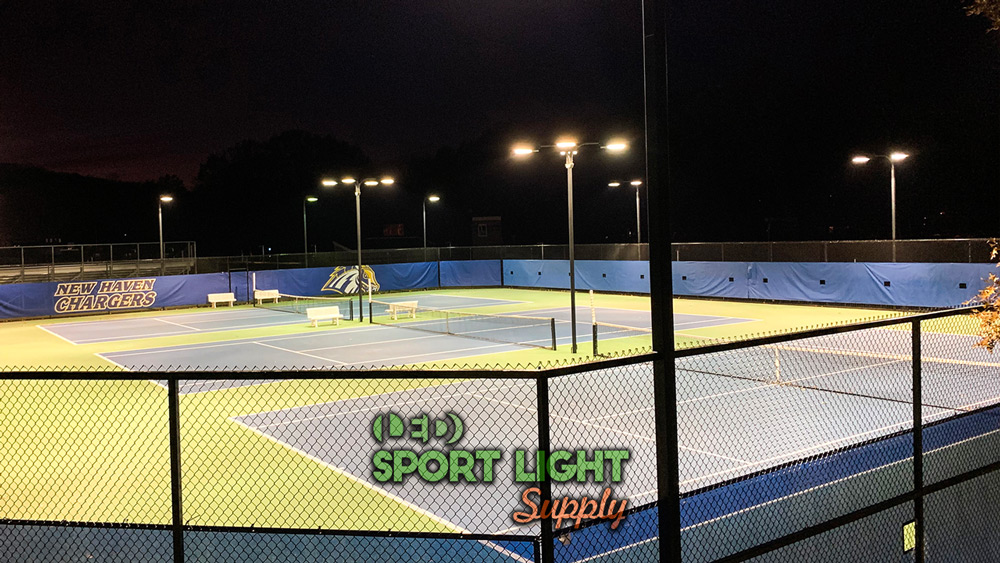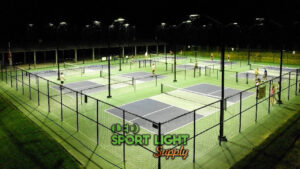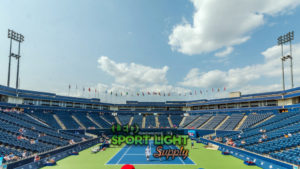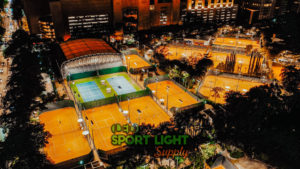Do you know? There are many lighting specifications for tennis court. By following the standards, we can have a well-lit tennis court which is good for tennis players and spectators. If you don’t have any lighting knowledge, you may be confused about what would be the requirement. This article is designed for you if you want to know more about outdoor and indoor tennis court lighting specifications.
Outdoor and Indoor tennis court lighting specifications
When it comes to outdoor or indoor tennis court lighting, there are several lighting standards we shall follow, such as brightness, uniformity, glare, color temperature and CRI.
1. Brightness level requirement
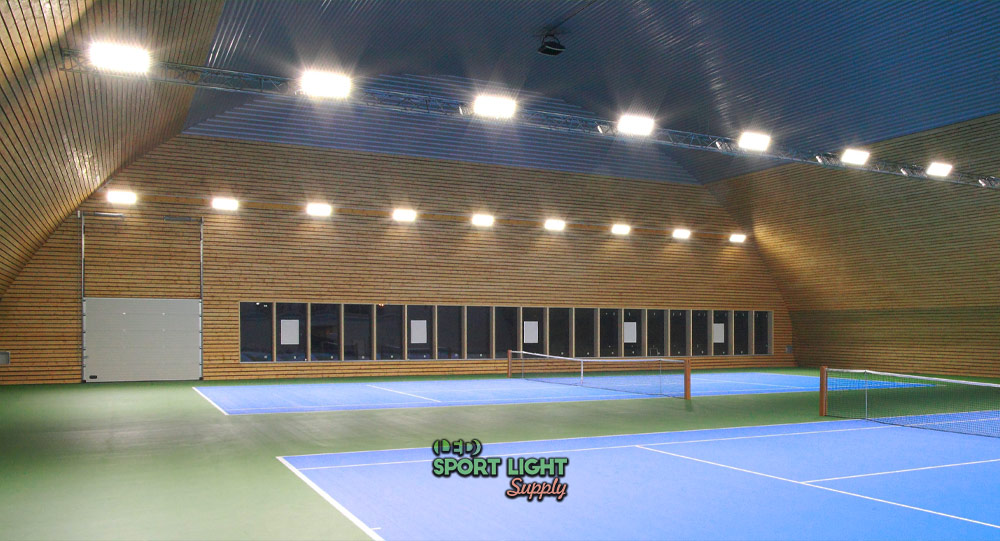
Different tennis court has their own lux level requirement. For instance, we need brighter lighting for tournament, and mild lighting for residential tennis courts.
How to measure the brightness level in order to fulfil the lighting specifications? In the lighting industry, we usually use lux to define brightness. Higher the lux level, brighter the tennis court. We can measure brightness of the court by a device called lux meter.
We use 3 classes to differentiate the tennis court lighting standard, namely class I, class II and class III. They are applicable to indoor and outdoor tennis courts.
Class I
If the tennis court is designed for national or international tournaments such as ATP, Wimbledon and US Open, the tennis court should fulfil class I lighting specification.
- Indoor tennis court requires 750+ lux
- Outdoor tennis court requires 500+ lux
Class II
This class is made for mid-level tennis competitions such as tennis club or college. The characteristic is that we don’t have many spectators for class II tennis venues.
- Indoor tennis court requires 500+ lux
- Outdoor tennis court needs 300+ lux
Class III
This lighting standard is designed for low-level tennis competitions such as residential tennis court or park.
- Indoor tennis court requires 300+ lux
- Outdoor tennis court requires 200+ lux
Hence, we can see the lighting level standard increases with the level of competition. Generally speaking, higher the lux level, brightness the tennis court lighting required. Before buying and installing the lighting fixtures, the first and foremost thing is to understand what you need to do in the tennis court – for competition, training or just recreational use?
See also: What are IES & USTA tennis court lighting standards??
A short quiz for you.
What is the lighting specification for backyard tennis court?
Ans: Class III, around 200 lux (outdoor)
What is the lighting level required for indoor tennis facilities?
Ans: Class III, around 500 lux (indoor)
If you can answer the above questions, you now understand the brightness standard of different kinds of tennis court. If you need more advice, please feel free to contact us. We offer free consultation and lighting design.
2. Lighting uniformity
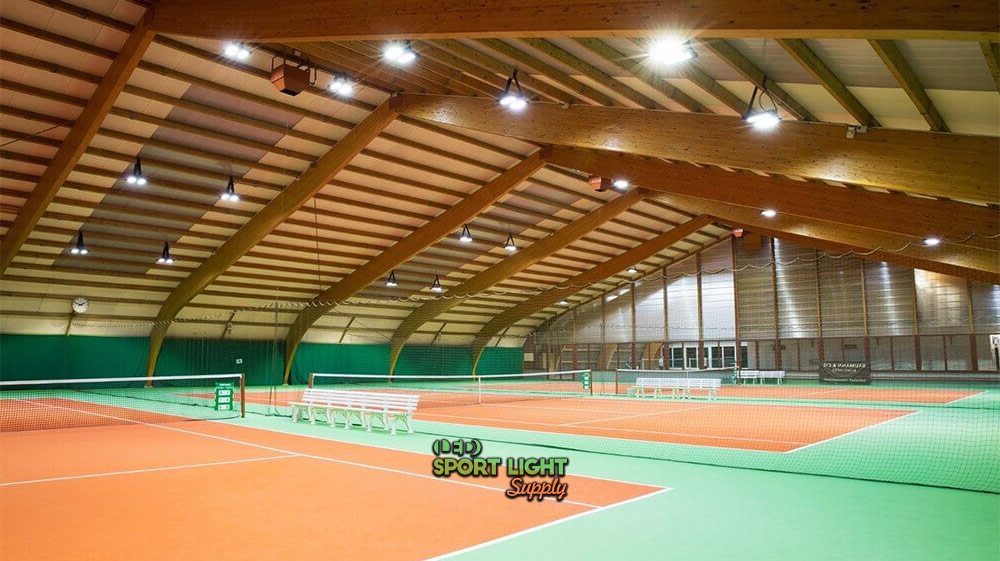
Another vital factor of tennis court lighting specification is the uniformity. It describes the lighting distribution on the tennis court surface. If you don’t see any significant bright spots or dim sports on the court, we can say the tennis court has high lighting uniformity.
Why do we need to consider lighting uniformity? Imagine the service boxes (center area) has 1000 lux, but the double alley has just 200 lux. Although the average lux level is around 500-600 lux, the center is significantly brighter than corners. So, the tennis players’ & spectator’s eyes may feel uncomfortable.
Lighting uniformity specification for tennis court
Class I and II tennis court require lighting uniformity of 0.7+, while class II needs 0.5+. How to calculate uniformity? In reality, we can measure the lux value in different spot of a tennis court by a lux meter. For instance, if we divide the tennis court into 8 x 6 grids, then we will have 48 lux values. Then, we analyze these 48 values to get the lighting uniformity.
One of the ways to calculate uniformity is to compare the ratio between minimum lux and average lux. If the minimum value is 300 lux and average value is 350 lux, the lighting uniformity of this tennis court would be 300/350 = 0.86, which is a relatively high value. If you need a more accurate result, you can take more measurements in the tennis court, so we can have more points.
3. Glare
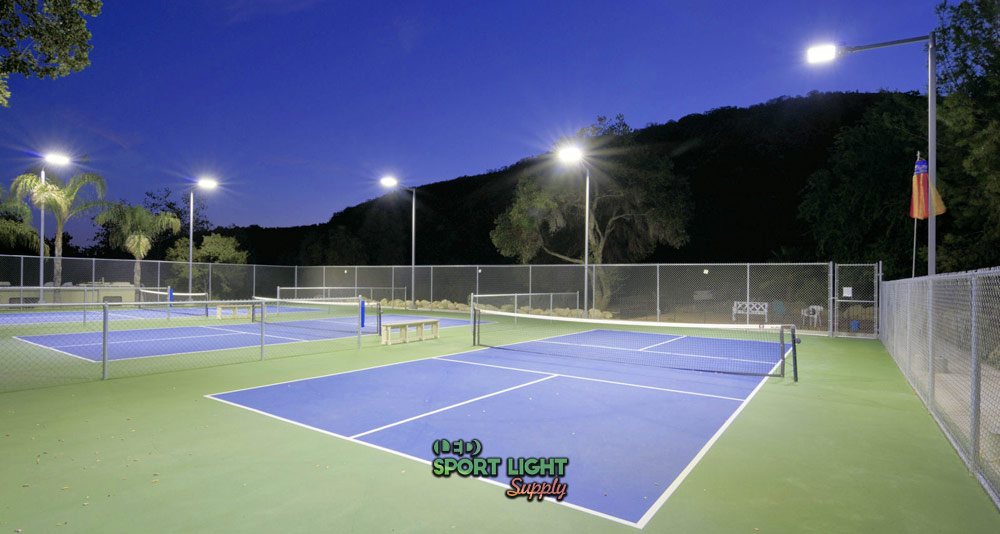
Some international tournaments, such as ATP and WTP, would impose the GR glare specification. Imagine when we directly looking at the flood lights in the tennis court, we may feel dazzled because of the bright lighting. If the glare is too significant, the tennis players might not be able to see the tennis balls and the opponents. This is particularly important for outdoor tennis court. The glare standard is that the GR rating should be less than 50 for class I & class II tennis court, and less than 55 for class III (for both outdoor and indoor). We can calculate the GR rating values in the DIALux. If you need assistant on tennis court lighting, please feel free to contact us, we offer free lighting consultation that satisfies any lighting specifications.
How to reduce glare in tennis court? Increasing the pole height can reduce glare because we can increase the distance between tennis players and the flood lights, so even if the players accidentally stare at the lights, the lighting intensity is reduced a little bit because of the natural attenuation.
Any way to reduce glare is to optimize the tennis court light pole layout. We can avoid putting the light poles at the corners because chances are that the players will look upward when they serve. If the light poles are located at the sides of double alley, we can reduce the glare observed.
4. Color temperature
Do we need yellowish lighting (warm white) or bluish write lighting (cool white) in the tennis court? Which one is better? Before talking about the color temperature, we need to understand what is it. Color temperature is basically a scale indicating the color of the lights. The warm white light has the range of 2800 to 3500K, while cool white light is >5000K.
If you are building a residential tennis court or replacing the old fixtures for your backyard court, we can think of yellowish lights. This is because the warm white light can create the cozy feeling, so we can enjoy the tennis play with friends or family members in a relaxing environment.
On the contrary, if the tennis court is made for competition, the color temperature should be 4000K or above because we need the invigorating lighting for the intense matches.
How to look at the specification sheet of tennis court lights?
If you happen to look at the catalog of sports lighting, you can find there are tones of specification listed in the page. Which specifications are the most important?
Before buying the tennis court lighting, we should look at the power, lumen, light source, beam angle, color temperature and IP rating.
1. Power and lumen
Lumen is the most important spec because it indicates the brightness of the tennis court flood lights. Higher the lumen, brighter the lights. The common tennis court light would have around 15,000 to 68,000 lumens, depending on the power and brand. Yet, we also need to see the power because this spec affects the energy efficiency.
See also: How many lumens to light a tennis court?
Imagine both lights can emit 60,000 lumens, but lamp A is 1000W while lamp B is 400W, which one would you prefer? Truly, we would select the more energy-saving option – Lamp B. Thus, when buying the tennis court lighting, we need to compare power consumption and lumen output at the same time.
2. Beam angle
There are many beam angles available in the market, such as 15°, 45°, 60°, 90°. Smaller beam angle means the light beams are more concentrated. Larger beam angle means the light beams are more diverge.
We can select different angles according to the tennis court pole height. Generally, 45° flood light is suitable for 6 to 8 meter pole height. If the pole is shorter, we may need to use 60° or even 90° because it is easier for the light beam to spread.
For the indoor tennis facilities, we will need 60° or 90° lighting, depending on the ceiling height and number of fixtures you use. For example, if you have a high ceiling, we can use 60°; if you have less fixtures, we can have 90°.
3. Color temperature
If you want to create the cozy feeling, we can select the flood lights having 2800 to 3500K color temperature, you will get the tennis court with yellowish lighting (warm white).
However, we need around 5000 to 6500K flood light to light up the tennis club, college, and other professional tennis court.
4. IP rating
The waterproof specification is particularly essential for outdoor tennis court lighting because the lighting fixture should be able to withstand the adverse weather conditions such as rain and snow. In light of this, the outdoor tennis court lamp should have the standard of IP65 or more. This should be able to protect the lamps from being damaged by the rain & windstorm. If you live in hurricane region, we can even select the IP67 standard lighting.
Should you have any enquiry, please feel free to drop us a message. Our engineer will provide you with the free lighting consultation for any kind of tennis courts.

